What low-growing varieties of tomatoes are the most productive
The variety of vegetable crops is incalculable. No exception and everyone's beloved tomato... Tomatoes were grown by the Aztecs as far back as 700 BC. There are about 10,000 types of tomatoes in the modern world. Species are grouped according to stem height, ripening time and method of consumption.
According to the height of the stem and bush, tomatoes are divided into undersized and tall. In the article, we will consider undersized varieties, their features and productivity.
The content of the article
Benefits of low-growing tomatoes
The undersized grows a small, compact bush with a thick, sturdy stem. These tomato take up little space in the greenhouse and on the ground, do not bend to the ground, do not break. Bushes grow up to a certain point, then the growth stops.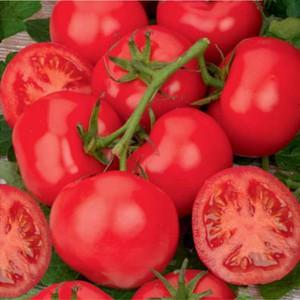
It is convenient to look after such bushes, since due to the early stabilization of growth, there is no need for pinching. This significantly saves time for caring for tomatoes; you do not need to track the appearance of new shoots and remove them.
Bushes of low-growing tomatoes form 2-3 inflorescences. It does not take much time for their growth, so all the nutrients go to the formation of the crop. The fruits appear quickly and ripen at the same time.
In taste and useful properties, low-growing varieties are not inferior, and even overtake their tall counterparts.
All standard varieties are resistant to pests and bad weather, there is very little hassle with them, so they are ideal for beginner gardeners.
Important! Low-growing tomatoes do not have time to get sick with late blight, as it appears by the end of summer.
Features of cultivation and yield
If you follow some simple rules for caring for low-growing varieties, you can easily and quickly get a harvest. What tomato seeds are the most productive, we will find out further, in the description of the varieties.
After purchasing the seeds, you need to prepare them for planting. The seeds are put in a solution of potassium permanganate for half an hour (10 g of potassium permanganate per half a liter of water), then spread on a cloth, covered with a film and placed in a warm place. After 2-3 days, the seeds will germinate. It is imperative to observe the sowing time, otherwise growing seedlings will be useless if the plants greatly outgrow by the date of planting.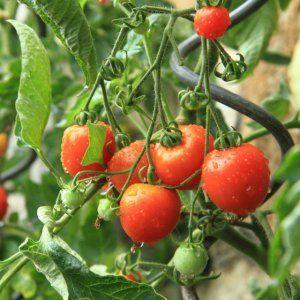
If the seed germination is 100% and the distance between the shoots is less than the permissible one, the plants that have formed 2-3 leaves are transplanted into separate cups or pulled out. This is called picking.
After the seeds have germinated, take the soil, warm it to room temperature, and distribute it in containers, such as plastic cups. The seedlings should grow on a sunny windowsill for about 2 months. While the sprouts are sprouting, you can feed them 1-2 times with mineral fertilizers.
The timing of planting tomatoes in a permanent place depends on the type of planting (to the greenhouse or open ground), as well as from the region. This is usually the period from March to April. If you have a heated greenhouse, you can plant in February, but in this case, you need to provide additional lighting in the greenhouse.
When planting seedlings in a greenhouse, observe the distance between the bushes of about 30-40 cm and plant the shoots in a checkerboard pattern so that it is convenient to reach each bush.
Note... When transshipment - planting seedlings - it is recommended to water it abundantly so as not to injure the roots.
Some varieties of low-growing tomatoes need a garter. Since the bush is small, and a lot of fruits are formed, the stem may break.
It is recommended to plant tomatoes in honeycomb polycarbonate greenhouses. Before planting seedlings, wash the walls of the greenhouse with soapy water, and spill the ground with boiling water or a solution of potassium permanganate. This is necessary to kill the parasites.
It is important that the design of the greenhouse presupposes a ventilation system and good lighting. The ground in the greenhouse must first be dug up together with humus or rotted manure. Fresh manure cannot be used, as it contains fungi and parasites.
Watering begins only after the seedlings have taken root in the soil. Water correctly once a week, 5-7 liters per 1 m². Watered in the morning or evening with settled water. Water at the root so that moisture does not get on the leaves and stems.
Note... To preserve moisture in the soil near the bush, it is recommended to put straw around the stem in a layer about 4-5 cm thick.
For root breathing, it is necessary to loosen the soil around the stems after each watering. Loosening improves the temperature and humidity conditions of the soil and mulching.
After the first fruits have set, it is recommended to pick off excess leaves so that the plant spends nutrients on the fruits, and not on the foliage.
The first time the tomatoes are fertilized 2-3 weeks after placing the seedlings in the greenhouse, the second time after another 10 days. For fertilization use a solution of water, manure and "Nitrofoski".
Attention! Nitrogen fertilizers and organic matter cannot be applied during flowering and fruiting.
Planting in open ground differs from planting in a greenhouse only in time, all other procedures are carried out in the same way.
After the first tomatoes appear and ripen, you will be surprised at how fertile these small bushes are. All fruits on one plant ripen at about the same time, grow juicy, tasty, fragrant.
Low-growing tomatoes for greenhouses
Among the low-growing varieties, tomatoes are distinguished, which are more suitable for greenhouses or for open ground.
Suitable for greenhouses are varietieslike Alaska, Riddle, Raja, Pink honey, hazel grouse. Let's consider each of them in more detail.
Alaska
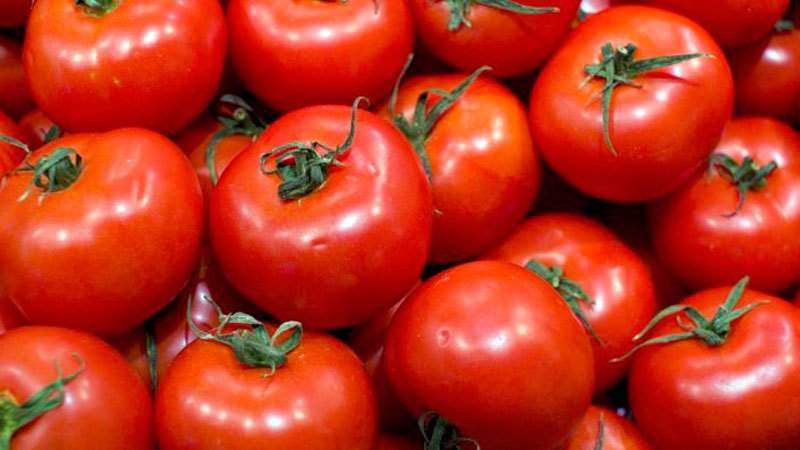
Alaska is a high-yielding, early-maturing variety of low-growing tomatoes. Fruits appear in June, ripening period is 80-100 days. A distinctive feature of the variety is that the fruits quickly turn red and sweet.
The height of the bush does not exceed 0.5 m, so the variety is called dwarf. Thanks to its low bush, this variety can easily withstand difficult weather conditions. However, despite the short stature, the bushes still need to be shaped and tied up so that the fruits do not break the stem. This variety belongs to tomatoes without pinching. It is better to plant 6-7 plants per 1 m².
The harvest is rich (2 kg per bush), the fruits ripen simultaneously and quickly, since the plant is capable of producing ovaries even at low temperatures, which is a rarity for tomatoes. Thanks to this feature, it is possible to grow this variety all year round on the balcony.
The fruit has a moderately dense skin, which makes it well suited for canning and fresh consumption. They tolerate storage and transportation well.
Riddle
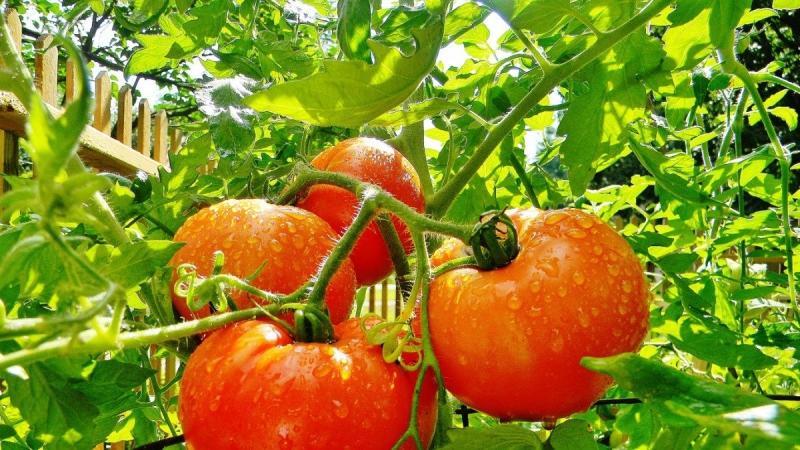
Variety Riddle refers to the determinant (having limited growth) type of tomato. This culture has a strong trunk 60 cm high. The bushes grow compact. Above the fifth or sixth leaf, the first cluster grows, on which about five to six fruits are tied.
Tomatoes are bright red, rounded. The surface is ribbed near the stalk. The mass of one tomato is approximately 112 g. The peel of the fruit is dense, does not crack, therefore these tomatoes tolerate transportation and storage well. The fleshy flesh tastes good.
It is possible to harvest 22 kg of crop from 1 m². The first fruits will ripen in early June. The culture does not require special care.
The recommended scheme for planting planting material is 6-8 bushes per square meter of area. Tomatoes should not interfere with each other.Each tomato of the Riddle variety should receive maximum light and air. Therefore, the holes are placed in a row with a pitch of 35-40 cm and leave 70-80 cm between the rows.
The best option - place seedlings in 2 rows, leaving 70-80 cm on the path. Wells 15-20 cm deep are prepared in advance.
Rajah
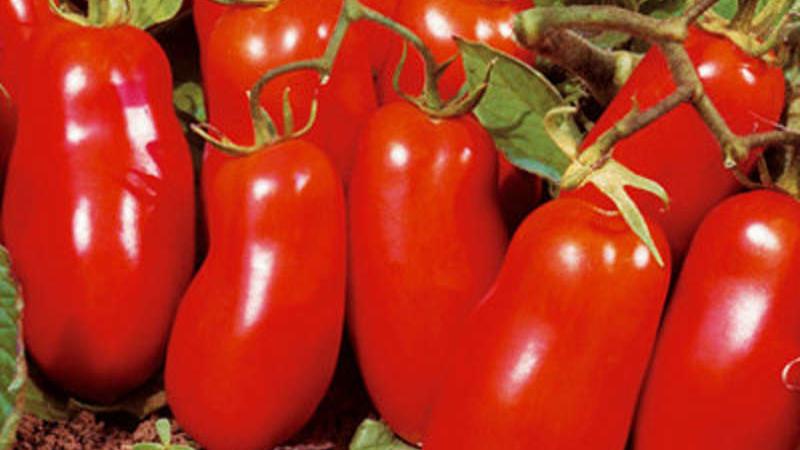
Raja is a low-growing, large-fruited tomato variety. Gardeners' reviews about this variety are extremely positive.
The fruits are not round, but oval. The weight of one tomato is about 300 g. The pulp is sweet, fleshy, few seeds. The fruits are suitable for salads, canning, sauces.
Tomatoes look beautiful in a greenhouse, fruits grow on bushes in large bunches of 5-7 pieces. Ripening period - 85-95 days, suitable for the north-west of Russia. The bush is powerful, grows from 1 to 1.5 meters in height, spreading. Requires formation. Very decent yield - from 3-4 kg per bush. Resistant to fungal and viral diseases, does not require prophylactic treatments.
Planting pattern: between rows - 60 cm, interval in a row - 40 cm. If you plant more than three pieces per square meter, the plants will create impenetrable thickets. Watering should be done in the evening, 2-3 hours before sunset. The tomato does not like excess moisture, drying out of the earth is also unacceptable.
Although this variety is undersized, it requires pinching. After the appearance of 5-7 fruit brushes, it is necessary to pin the plant, that is, remove the crown. Due to the abundant yield, the bushes are tied up no later than 2 weeks after planting, until the tomato is stretched out on the ground.
Pink honey

The variety Pink honey is classified as a large-fruited tomato of the determinant type. The height of the bush is from 60 to 1.4 m. This plant requires tying and pinching. It tolerates drought and adverse weather conditions well. It has an average resistance to diseases.
A distinctive feature of the variety is large fruits (up to 1.5 kg) of a pleasant pink color, multi-chamber... The pulp of the fruit is fleshy, sugary, there is no sourness. The shape of the tomato is heart-shaped, ribbed.
The variety is recommended for growing in the middle lane and Siberian regions. After the first year of cultivation seed of the resulting fruits are suitable for sowing seedlings. The ripening period of tomatoes is 111-115 days. Sowing seeds for seedlings begins in early March. The first crop is harvested in August. The formation of a bush is recommended in 2 stems, pinching is necessary to increase the number of ovaries.
Tomato planting scheme: 50 x 40 cm, 3-4 bushes per 1 sq. m. Productivity - up to 6 kg per bush.
From 3 to 10 ovaries are formed on the brush. The first tomato the largest, the next smaller - from 600 to 800 g. They have a tendency to cracking due to thin skin. Poorly tolerated transportation and storage. Most delicious fresh. The fruits are used in the preparation of salads, juice, pasta, ketchup, as part of winter salads, adjika, soups and even jam.
Tomato Pink honey does not require much maintenance. Seedlings are planted in the soil where cabbage, radishes or onions grew. In this way, diseases common to nightshade crops can be avoided. The variety Pink honey is drought-resistant, needs watering 2 times a week, while watering should be abundant, at the root.
Grouse
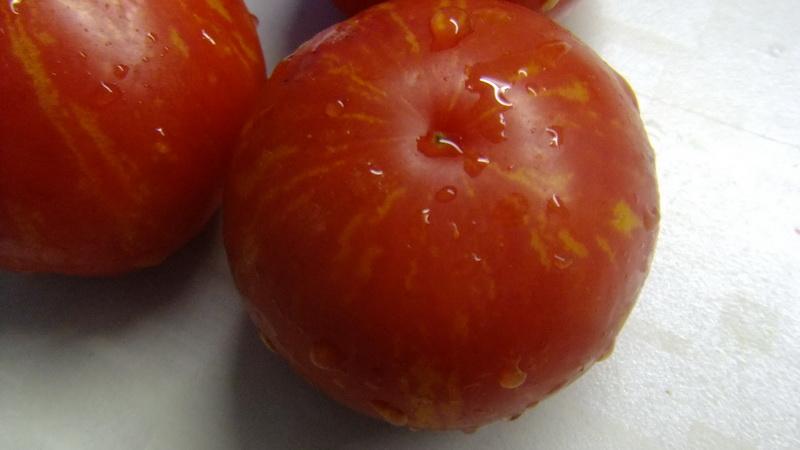
Grouse is a mid-season undersized variety. The plant is not prone to strong pinching, which eliminates the need for gardeners to pinch. The height of the bush varies from 60 to 75 cm.
Fruiting period is 110–115 days from seedling formation. The shape of the fruit is flattened. The surface is striped, red-yellow, the skin is elastic, so the fruits do not crack. Fruit weight - 200-300 g.
The crop yield is high: under normal weather conditions and appropriate care, 5-6 fruits are tied on the branch. Tomatoes ripen quickly, almost simultaneously.
Caring for tomatoes of the Grouse variety is no different from the rest of the undersized varieties.
The vegetable culture is not very demanding on moisture, but the plants need to be watered regularly. Fertilize tomatoes of this variety with a solution of chicken manure and manure, compost.
Low-growing tomatoes for open ground
According to the experience of gardeners, the best varieties of low-growing tomatoes for open ground can be safely called Aquarelle, Golden Stream, Red Fang, Supermodel, Eldorado.
Watercolor
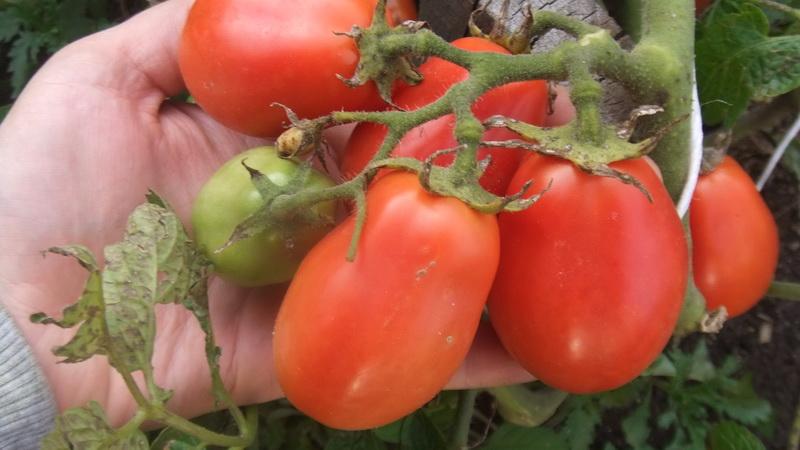
The bushes of this variety are distinguished by a powerful massive stem up to 50 cm high.Tomatoes do not need to be tied, however, when harvest ripens, it is better to prop up the bushes so that the fruits do not come into contact with the ground and do not rot.
The variety is suitable for regions with different climates and gives a consistently good harvest. Each branch produces 6 identical fruits of the same size, rounded, slightly elongated. By weight, they vary from 60 to 100 g. Experienced gardeners claim that from 1 m² of the plot on which the crop grows, from 6 to 9 kg of the crop can be removed per season. The tomato has a sweetish taste, its pulp is quite dense and fleshy.
A characteristic feature of the Aquarelle variety is considered to be yellowish spots, which are located on the fruits around the stalk.
Tomatoes Aquarelle can withstand transportation without any problems, since their flesh is quite dense. It is recommended to store tomatoes no longer than 1 month.
The most popular use is canning. Identical in shape, bright medium-sized tomatoes look beautiful in a jar.
Planting in the ground is carried out in May. Seedlings are planted at the rate of 1 m² for 3-4 plants. The variety loves good lighting and regular watering. Watering tomatoes is required every 10-12 days. The water must be defended and kept up to a temperature of +20 ° C. It is important to timely apply top dressing and mineral fertilizer to the soil.
Golden stream
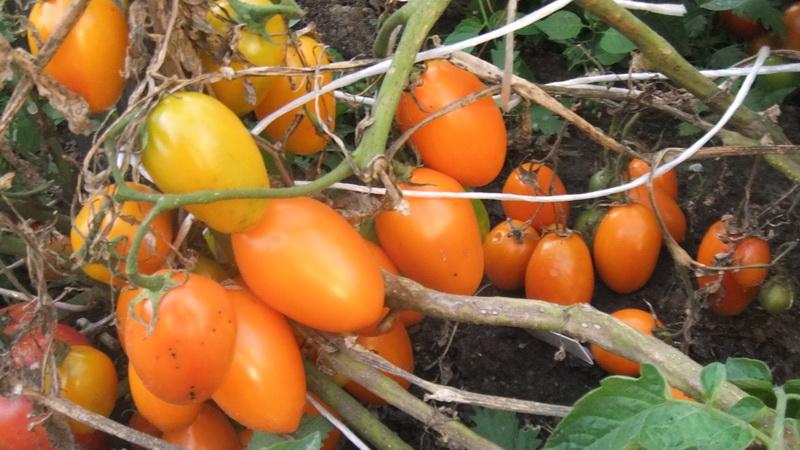
The Golden Stream variety stands out among other tomatoes for its appearance. Fruits of a rich golden color, oval, weighing up to 80 g, seem to flow through the bush in a cascade.
The taste is excellent: sweet, rich. The pulp is firm. There are 4 to 6 seed chambers, but they are poorly expressed, there are few seeds. Dry matter in juice is not less than 6%, sugar is 4.5-5%. The yellow-orange fruits are high in carotene. In the body, it is converted to vitamin A. The increased content of carotene makes it possible to add it to the number of tomatoes recommended for dietary nutrition.
This is not its only advantage. The variety is ultra-early ripening, from germination to maturity - 82-86 days. Fruit ripening occurs simultaneously. The purpose is universal - suitable for all types of processing. Resistance to temperature extremes and diseases was noted. Productivity - from 8 to 10 kg per square meter.
The Golden Stream tomato variety has good immunity. The main pest is the Colorado potato beetle. When it appears, the plants are treated with any insecticide according to the instructions for the preparation.
Red fang
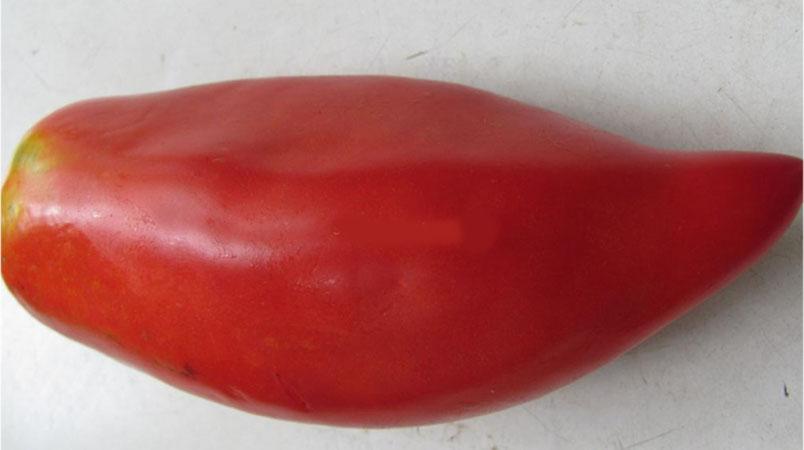
Bushes of the Red Canine variety are small in height (80-90 cm), neat, compact, do not need pinching. Sometimes you can prop up bushes so that they don't fall over.
The color of the fruit is red. The shape is oblong, rounded, often there is a sharp point at the tip, which is why the fruit resembles a canine in shape (hence its name). The pulp is firm, firm. Classic fruit taste and aroma.
The skin is very strong, the fruits do not crack when ripe and retain their presentation for a long time. They easily tolerate long haulage, ripen quickly when torn off.
Due to their compact, neat shape and dense pulp structure, these tomatoes are most often canned, they look very impressive in jars. However, the fruits are also good for fresh consumption, making summer salads, soups and sauces.
Sowing, like other early maturing varieties, begins 50-60 days before planting in a permanent place. The variety has no individual characteristics for germinating seeds and seedlings. A sunny area is ideal for planting a variety.
Supermodel
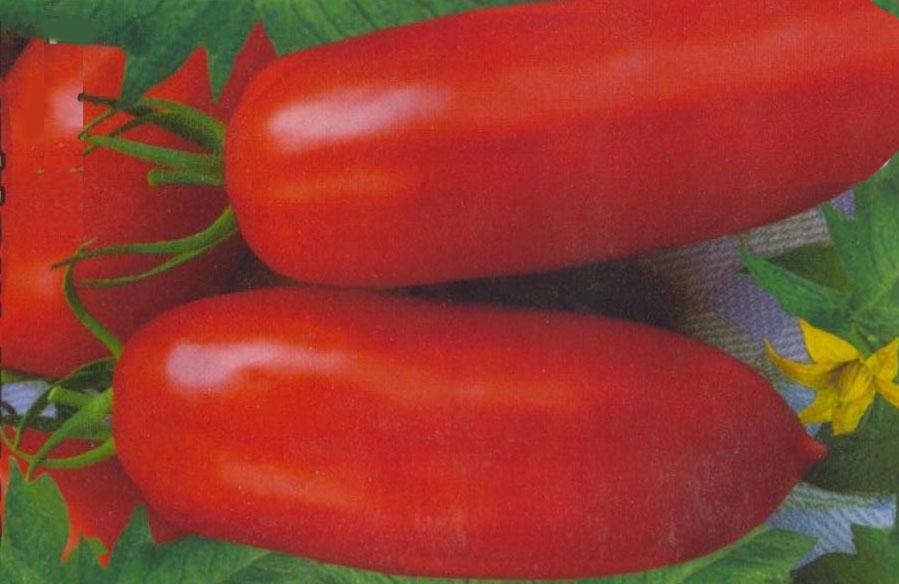
Supermodel is an early variety of low-growing tomatoes.The period from germination to harvest is 100-120 days. Determinate bushes, reach a height of 60-80 cm, need to be shaped and tied to a support.
Fruits are rather long in comparison with other representatives of tomatoes, reach 10-15 cm, weight rarely exceeds 120 g. Fruit color is deep pink. The pulp is dense, with little seed, usually 2-3 chambers. The skin is thin, smooth.
Plants are unpretentious, resistant to the main diseases of tomatoes. The variety is recommended for growing in all regions.
Growing tomatoes through seedlings involves planting it at the age of 60-65 days in open ground around May 10-25. The first fruits can be obtained at the beginning of July. Thanks to their dense pulp, tomatoes are stored for a long time and ripen well after harvest.
El Dorado
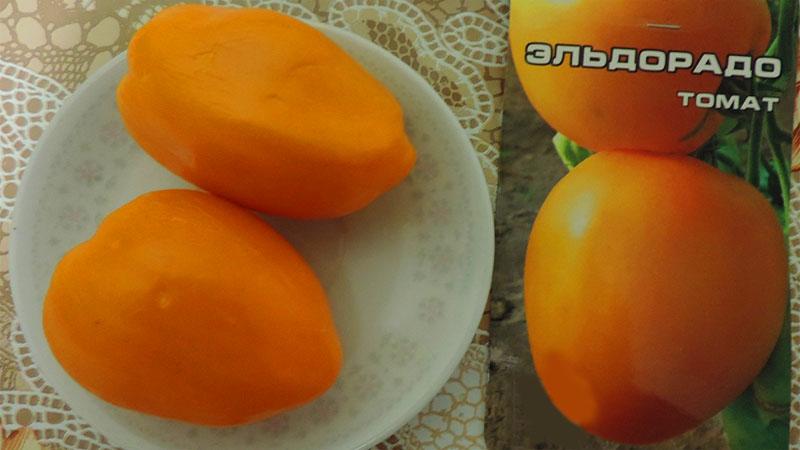
The variety is undersized, stops growing after the formation of 4-6 clusters. Height reaches 90 cm. The plant does not tolerate temperature changes, therefore it is more suitable for the southern regions of the country.
Tomatoes of this variety are medium early, 110-120 days pass from sowing to fruit ripening. The yield of the variety is high: about 5 kg of fruit can be collected from each bush. On the plant, 4-6 clusters are formed with 4-6 fruits of average weight about 300 g. To get a good return from planting Eldorado tomatoes, it is recommended to form bushes in 2-3 stems. Plants need a garter and pinching.
The main feature of this variety is that its fruits are very sweet and belong to dessert-flavored tomatoes. Another feature is the shape and color of the fruits: they are bright yellow, round-heart-shaped. The pulp is juicy and fleshy, with a pleasant consistency, evenly colored yellow.
The peel is strong, ripe tomatoes do not crack and are well stored without losing their taste. The Eldorado variety is adapted for long-term transportation and ripening in the removed form. Fruits ripen at room temperature.Eldorado is a salad variety.
Conclusion
As can be seen from the description of the varieties given above, all tomatoes are different in taste, appearance, size, but all low-growing varieties combine a number of qualities: early ripening of fruits, a small neat bush, ease of care, resistance to weather conditions and diseases.
Such varieties bring a minimum of inconvenience, they do not need to be pinned, pinched, treated against most diseases and pests, and spend a lot of time on a garter. At the same time, the harvest is very good and early.